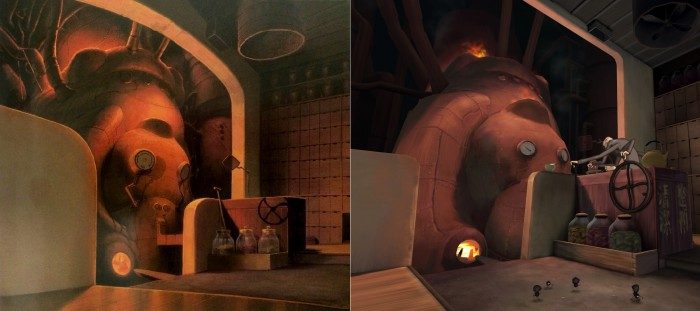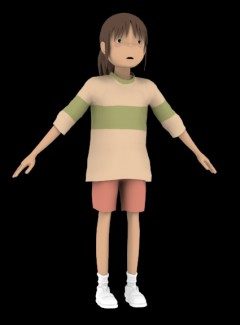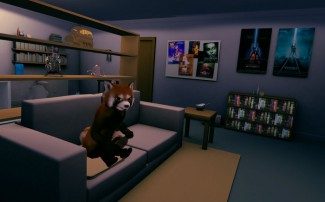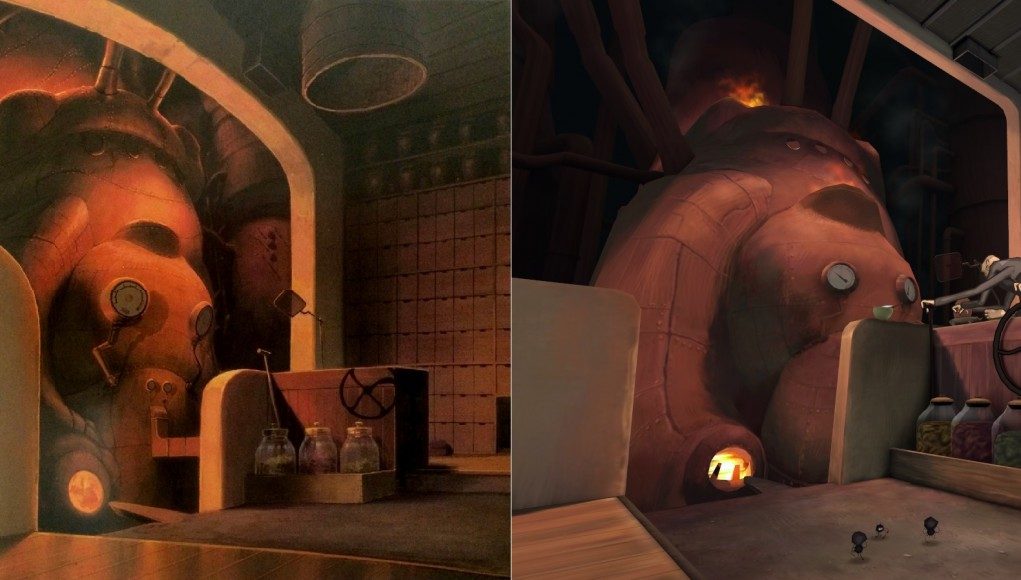Nick Pittom, the mind behind the nostalgic VR recreations of famous Studio Ghibli films, is shifting his focus from game development to CG VR cinema. In the meantime, he’s launched a zany Kickstarter campaign to pay his way to the Oculus Connect Conference and to build an Oculus Rift compatible experience based on his trip. I recently caught up with Pittom to learn more about his ongoing virtual reality development plans.Pittom began his portfolio of VR work by recreating scenes from two beloved Studio Ghibli films.
The first, Spirited Away VR – Boiler Room Scene, put players in the shoes of protagonist Chihiro who finds herself lost in a fantastical spirit realm in the film Spirited Away (2001). The demo faithfully recreates a scene from the film where Chihiro first enters a mysterious bathhouse for spirits through the building’s boiler room. Pittom ‘hand painted’ digital textures to retain the feel of the film’s beautiful painted backgrounds. The characters were rendered with a cel shading style to approximate the technique used to color traditionally animated characters. Accompanied by the original soundtrack, the scene lets players feel like they are inside a segment of a cherished film.

Pittom followed up his Spirited Away work with another Ghibli film experience from My Neighbor Totoro (1988). In My Neighbour Totoro VR – Bus Stop Scene, viewers meet the adorably large character, Totoro. Unlike the Spirited Away experience, which was mostly static save for a few looping animations, players of My Neighbour Totoro VR get to watch the memorable scene unfold before their eyes, even spotting the ten-legged Catbus. Pittom employed a similar art style to match that of the film.
With his first two anime-based experiences enthusiastically received, Pittom announced that his next project would be based on the anime series Cowboy Bebop (1998). In it, he expected to explore dialogue and character interaction with the player. Following a Cowboy Bebop experience, Pittom planned to move into development of a full game called Decay Theory.
However, Pittom has now set his sights on a new course.
“With Cowboy Bebop I had chosen it thinking to experiment with some character interaction and exploration, but a couple of things happened. The first is that I have become wary of intellectual property issues—it becomes difficult to do demonstrations of demos in certain settings without approval from the rights holders—and the second is that I felt I’d be able to be more ambitious and gain greater support if I was working on original projects,” Pittom told me. “I’ve been blown away by the awesome responses to the two Ghibli demos—people really love them—and I know a lot of that is down to their fondness for the films themselves. I want to be able to create original experiences that can generate that kind of emotional response from people. Difficult perhaps, but ultimately more rewarding I think.”

Pittom plans to focus not on gaming but on CG VR experiences. His first step in this direction will be returning to the boiler room to experiment. He plans to recreate the characters and dialogue from the film. How the viewer will be part of the scene is still an open question.
“How can we present narratives, like a film, theatre or books do, in a VR medium? Surely there is a way to simply tell a story without a player having to be the protagonist, but equally VR screams out for the viewer to not simply be a dumb ‘camera’ in the scene. I think there’s a nice balance that can be struck in allowing the player to have direction over their viewing experience, without having to ‘walk around’ the scene and without being an ‘actor’ in it,” Pittom said. “It might be a little unintuitive to use the Spirited Away scene considering I just abandoned the idea of adapting other people’s work, but really it’s purely an experiment in techniques I can use in the future.”
As with live-action VR cinema, there’s many questions about the grammar of CG VR cinema.
To be inside this world, to be able to look at events around you, see what you want—it presents some very compelling possibilities. The player has a role in ‘directing’ the story. They choose the camera ‘angle’. They choose what is important to look at, or to follow the details they want. But with these possibilities come potential problems. How do you avoid the viewer looking the ‘wrong’ way when something important happens? Do you throw enough distractions at them until they look the ‘correct’ way? Movement is troublesome as it’s going to make some people motion sick, so fixed cameras seem like a good idea, but what if you want your ‘actors’ to be further away from the ‘camera’—the viewer—do you ‘cut’ the position of the viewer, teleporting them to a new position? Will that be disorientating?
Through his experiments, Pittom hopes to structure that grammar to eventually inform a short CG film shot specifically for VR. The film will be based on his Decay Theory concept, a sci-fi adventure. But before Pittom jumps waist deep into a sea of CG VR cinema, he’s crossing the big pond to the U.S.
“RedOfPaw’s Big Crazy Stupid VR Adventure and American Pie”

That’s the title of Pittom’s Kickstarter campaign that he launched earlier this month (he goes by RedOfPaw, online) . He wanted to attend Oculus VR’s forthcoming Connect VR developer conference in Los Angeles, but being in the U.K., his options were limited. On a whim, Pittom launched a zany Kickstarter campaign to raise £1,700 for his trip—and it worked. With the promise of an Oculus Rift enabled game based on his trip to Oculus Connect, Pittom exceeded his goal several days ago. The campaign is now just over £2,000 and, luckily, doesn’t look like it will reach the lofty £22,000 stretch goal which promises to have Pittom 3D scanned into the game—naked.
“The game itself will be based on my experience going to Oculus Connect, but in a very surreal way, and hopefully something people find fun,” Pittom told me. “I absolutely want to make an awesome, fun and somewhat silly game people can enjoy! I see it as a way to experiment with a load of crazy, fun ideas that I would not otherwise be able to fit into my more ‘serious’ projects.”
Today Pittom has released a work-in-progress demo of Big Crazy Stupid VR Adventure which is every bit as wacky as the Kickstarter promises. I won’t spoil it for you—let’s just say that Pittom has an eclectic taste when it comes to American television.
The Big Crazy Stupid VR Adventure demo currently supports the Oculus Rift DK1 and Pittom says DK2 support will be coming as soon as Oculus is done with the latest SDK. DK2 support will also be coming to his previous Studio Ghibli demos.









